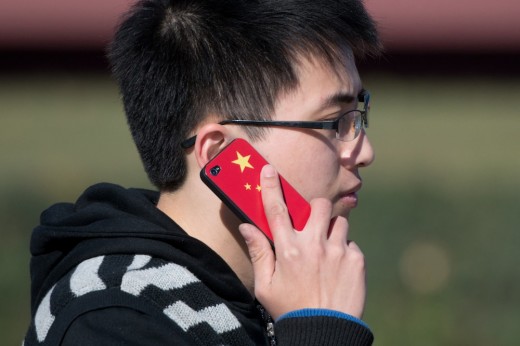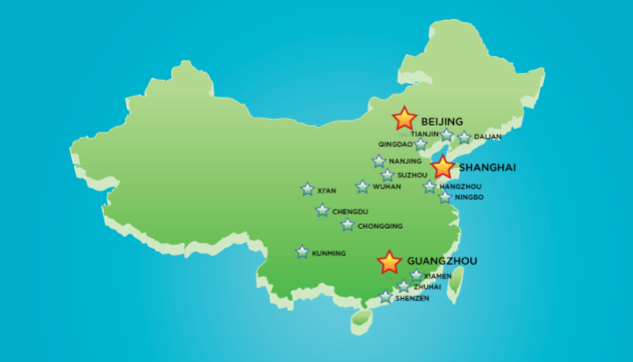
Yu Yongfu is the chairman and CEO of UCWeb, whose mission is to provide a better mobile Internet experience to billions of users around the world. Earlier in his career, he was a VP at Legend Capital. Yu graduated from Nankai University in 1999 with a bachelor’s degree in economics.
Whenever I visit the US, one question mobile entrepreneurs always ask me is ‘How can my startup break into China?’
The short answer is simple: Partnership. But finding the right local partner isn’t easy, and even if you do find one, gaining a foothold in the massive Chinese mobile market takes patience, insight, and strategy.
Seeing double
The biggest mistake most US entrepreneurs make right off the bat is in thinking of China as one market. In fact, in the mobile market, China is made up of two distinct markets.
Cities such as Beijing, Shanghai and Guangzhou are similar to the US; consumers in these urban centers are tech savvy, and there is a high percentage of iPhone and tablet ownership.
But outside of these cities, China’s mobile market is made up of millions of less affluent consumers who use low-cost Android phones and often don’t have access to high-bandwidth mobile connectivity. Market demand for this sector is best seen in the rapid growth of Xiaomi, a Chinese cell phone manufacturer who reported online sales of 100,000 mobile phones in 90 seconds for its sub-1000 yuan phone (about $130 US).
Such extreme differences between the two markets have made it difficult for US mobile startups to successfully enter China, even if they manage to partner with top local players.
But in order to succeed, US companies must have a winning strategy for both markets or risk losing out on huge opportunities.
The good news is US mobile startups often have an advantage over larger players in breaking into the Chinese mobile market. Startups are willing to explore a variety of partnership and strategy options to enter the market, and are more nimble and flexible to react to ‘hurdles’ when they appear.
Here are three steps can US mobile startups take to successfully grow their businesses across China.
The right partners
The first step is finding the right partner – one that understands your startup’s unique offer, has proven success in both Tier 1 and 2 markets, and is committed to growing your business alongside its own.
When partnering in China, don’t be afraid to get creative. GGV Capital matched a leading US player in the SaaS space with an emerging leader in China. The US company not only struck up a partnership but also ended up investing along side the venture firm in the Chinese company.
 Technology collaborations along the lines of the Qualcomm-Tudou partnership are another example of creative US-China partnerships.
Technology collaborations along the lines of the Qualcomm-Tudou partnership are another example of creative US-China partnerships.
Last year, my company, UCWeb, teamed up with Evernote in a ‘marketing partnership’ to help the US company gain a deeper understanding of the Chinese mobile web consumer in advance of its formal China launch later that year. These strategic relationships may not be traditional, but they have delivered positive results for all involved parties.
US startups can also gain a foothold with the Chinese government through strategic partnerships. For example, Microsoft is the first major US provider to launch a public cloud in China through a three-way strategic partnership with 21Vianet, China’s largest carrier-neutral internet data services provider, and the Shanghai Municipal Government
Cultural immersion
In order to understand the vast and complex Chinese business landscape, you must see and experience China for yourself.
Once you have tapped into all your US connections, the next step is to build your own relationships on the ground in China. There is no substitute for spending a regular and significant amount of time there.
 When visiting China, it is essential that you forge your own path, both literally and figuratively; if you follow someone else’s agenda, you may miss the chance to discover an untapped opportunity.
When visiting China, it is essential that you forge your own path, both literally and figuratively; if you follow someone else’s agenda, you may miss the chance to discover an untapped opportunity.
Take the time to explore both Tier 1 and Tier 2 cities. Not only will firsthand knowledge of Chinese business strengthen your position as a partner, but it will trigger your creativity so you can develop fresh, unique approaches for different segments of the Chinese market.
Strategy shift
Finally, US startups must adapt their business strategies to the Chinese market. For US entrepreneurs, this requires parting with assumptions and accepting input from local partners when it comes to marketing, competitive analysis and cultural trends.
This could mean making a significant departure from your company’s US strategy, or a radical pivot from your current China strategy. Either way, without an open-minded attitude, US companies will fail in China.
One example of a US mobile company that is successfully adapting its product strategy to the Chinese market is Appcelerator. Thanks to its partnership with the China Software Developer Network (CSDN), the largest developer community in China, Appcelerator is building the next generation mobile platform for China’s mobile market.
With more than a billion mobile subscribers, China represents an irresistible opportunity for mobile-first companies to grow exponentially. In order to successfully incorporate China into a global mobile strategy, US entrepreneurs must drill down to the local level to reach both Tier 1 and Tier 2 markets.
This two-tier strategy may involve greater effort, creativity and flexibility, but it will surely result in richer rewards.
Get the TNW newsletter
Get the most important tech news in your inbox each week.






